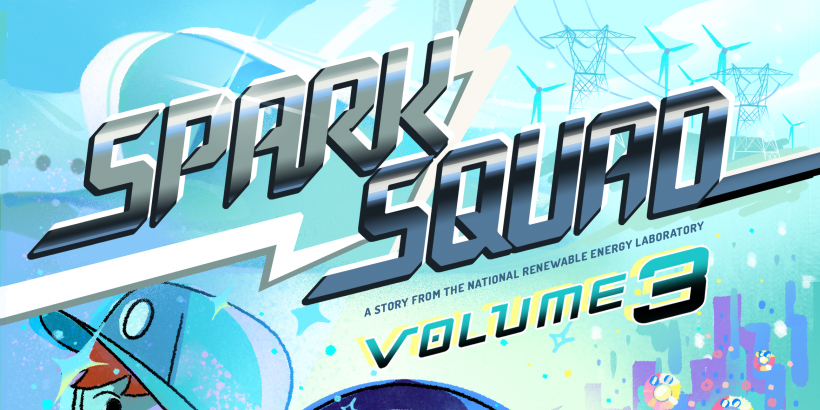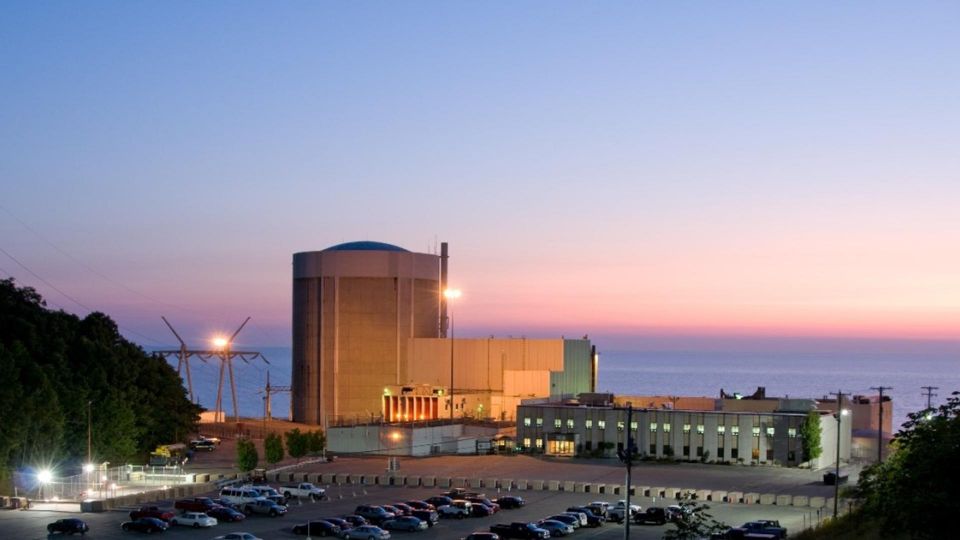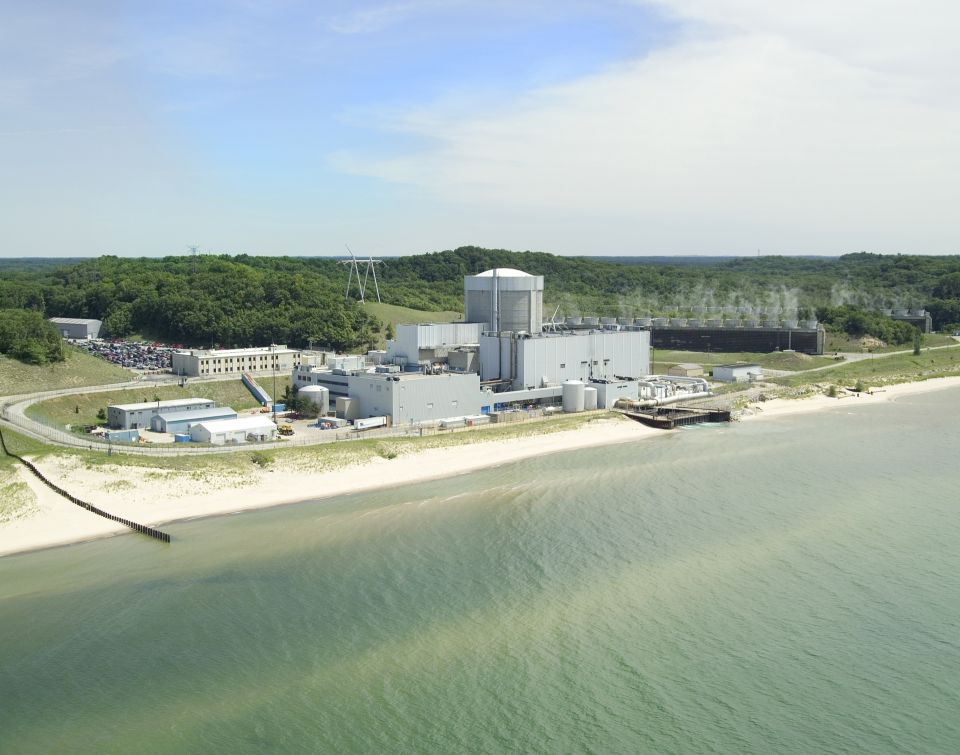Return to the 1970s
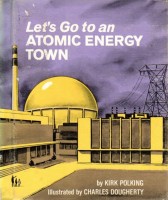 In the 1960s, visions for nuclear power were hopeful and plentiful; nuclear plants of all sorts imaginable* were under consideration and under construction in areas both urban and remote, while future plans portrayed an enormous nuclear plant build-out with a complete fuel cycle that included fuel recycling and breeder reactors.
In the 1960s, visions for nuclear power were hopeful and plentiful; nuclear plants of all sorts imaginable* were under consideration and under construction in areas both urban and remote, while future plans portrayed an enormous nuclear plant build-out with a complete fuel cycle that included fuel recycling and breeder reactors.
By the 1980s, dozens and dozens of nuclear plants had been cancelled and many others deferred; only light water cooled and moderated reactors were under construction or even considered; the fuel cycle was irreparably broken and stuck at "once-through," and breeders were dead.
What happened? Well, the short answer is this: "The 1970s happened." You know, the '70s-the decade of purported social decay, purported imminent ecological collapse, purported continuous and irreversible fuel and energy shortage; a decade marked by conservationism (the idea that we should do less with less) having taken over the pulpit from environmentalism (the idea that we should do as much as possible to try to not harm the environment) and a decade marked by deep suspicion of anything even remotely suspected of being corporate.
The damage to nuclear energy's future wasn't entirely the fault of the US government, although it played a major role. The first events of the decade concerning nuclear surrounded the breakup of the Atomic Energy Commission, which was split into the Nuclear Regulatory Commission (NRC) and the Energy Research and Development Administration (ERDA). The decade later also saw the breakup of the very powerful Congressional Joint Committee on Atomic Energy. These moves, driven by the desire among some that the federal government has no stake in promoting nuclear energy, effectively killed off any ability of the government to drive goals or make real accomplishments in the field (the downsizing of the small modular reactor dream recently is all the proof one needs of this; compare it to the long list of nuclear plant types actually built as listed in the footnotes). The only body remaining with any real power, the NRC, served only to license and oversee nuclear plants and has no promotional mandate.**
The real mandate was made quite clear in March 1977 when the ERDA set up the Solar Energy Research Institute to develop solar energy (an arena in which NASA was also working-astronaut Dr. Harrison Schmitt was for a time in charge of the program). Thus, the government quickly eviscerated any attempt to keep federal money and direction behind nuclear energy, and made at least some effort to move it instead into solar. At roughly the same time, research into coal power, on the federal dime, was also continuing-a NASA program to study coal gasification and co-generation comes to mind from then.
The Carter administration is the entity upon which we can reflect today as being most intimately involved with serious changes during this pivotal decade. It was during these years that the Joint Committee on Atomic Energy was broken up; the administration was also responsible for plans that led to issuance of ERDA document ERDA 77-1, "A National Plan for Energy Research, Development and Demonstration," from early 1977. It is not putting the matter too seriously to say that this policy brief outlines plans and considerations that can, in hindsight, only be considered foolish and disastrous. Let's outline a few of the decisions, considerations, and plans found in this directive:
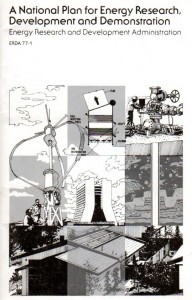 • The first priority was conservation-not energy production. This focus, made all too clear by the book's overemphasis on not doing more with less, but rather doing less with less, was intended to ".. reduce the annual rate of growth of demand to less than 2 percent." This was a deliberate effort to drive down growth of generating capacity-a move completely unnecessary if nuclear energy were pushed, since it does not use any of the supposedly dwindling fuel sources.
• The first priority was conservation-not energy production. This focus, made all too clear by the book's overemphasis on not doing more with less, but rather doing less with less, was intended to ".. reduce the annual rate of growth of demand to less than 2 percent." This was a deliberate effort to drive down growth of generating capacity-a move completely unnecessary if nuclear energy were pushed, since it does not use any of the supposedly dwindling fuel sources.
• "Industries and utilities using oil and natural gas should convert to coal and other abundant fuels." This is the second major goal of the program; its ridiculousness today is obvious on many fronts.
• Another telling quote: "This National Energy Plan is necessary because, despite positive efforts by federal and state governments, industry, and the American public to conserve energy and increase domestic energy supplies, the Nation is, more than ever, reliant on the least plentiful domestic energy resources, petroleum and natural gas." The untruth of this statement rings hard on the ears today in a world full of oil, natural gas, and shale deposits. But it was the "truth" of the time-or so we were told.
Nuclear Power and the ERDA plan
The ERDA plan wasn't entirely unrealistic in terms of its approach to nuclear energy-I say this because there were some sensible ideas, including the streamlining of regulatory requirements-and this was BEFORE Three Mile Island.
The plans for uranium fueled light water reactors were, on the surface, sensible. For example, an expansion of nuclear fuel resources and utilization was planned that was to see greater extraction of uranium from ore, more efficient use of uranium, a better analysis of available and future supply of ore, and even a look at other fuels such as thorium (which was put into the Shippingport pressurized water reactor during the Carter administration.) The plan also sought to increase nuclear plant capacity factors and "decrease plant construction time and costs through standardization of designs." None of these ideas, however, was new or unique to this administration-it was simply promoting things in this part of the vision for the path forward that had already been printed long before.
The plan's major changes to the overall nuclear fuel cycle centered on fears of weapons proliferation-the fear that someone, somehow would obtain fissile material from the US nuclear fuel cycle and create a nuclear weapon with it. This fear made the Carter administration try to kill the fast breeder reactor program, and halted plutonium fuel reprocessing. To wit:
"The United States is currently reorienting its advanced nuclear reactor research and development program due to concern with proliferation dangers associated with the plutonium fuel cycle. The President (Carter) has proposed to defer efforts to commercialize the Liquid Metal Fast Breeder Reactor (LMFBR). He has proposed that the systems design for the Clinch River Breeder Reactor Demonstration (CRBR) plant be completed, but construction and operation be cancelled. However, the Fast Flux Test reactor under construction at Hanford will be completed and become operable by 1980.Alternative reactor systems, including breeders and advanced converters, will be investigated with emphasis on nonproliferation and safety factors. Spectral shift and tandem cycle techniques are being considered as methods to improve the performance of converter reactors. Co-processing of spent fuel from converter reactors is being examined as a possible method for increasing fuel supply to converter reactors or breeder reactors while reducing proliferation dangers. A variety of thorium breeders as well as converter reactors are under consideration as alternatives to the LMFBR. The fuel cycle alternative studies will be completed within about two years."
Other than the light water breeder experiment at Shippingport, not much ever came of these somewhat grand and fairly positive sounding plans. Instead, the push for conservation (which takes up much of the book), the push for renewables (much more of the book), and fossil fuel (also a large part of the book) continued unabated.
 Frankly, viewed today, this policy document is quite depressing. Fear overtakes all-fear of pollution, fear of fuel shortage (except coal!), fear of nuclear weapons (which somehow must always be mentioned whenever nuclear energy is mentioned in this policy document***), fear of ecological collapse and societal ruin. This was a policy meant to smash the energy business-not reinvigorate it. It was a policy whose only realistic outcome could be either intended or unintended support for that which already held the high ground: Coal.
Frankly, viewed today, this policy document is quite depressing. Fear overtakes all-fear of pollution, fear of fuel shortage (except coal!), fear of nuclear weapons (which somehow must always be mentioned whenever nuclear energy is mentioned in this policy document***), fear of ecological collapse and societal ruin. This was a policy meant to smash the energy business-not reinvigorate it. It was a policy whose only realistic outcome could be either intended or unintended support for that which already held the high ground: Coal.
Lessons for today
Today, we find a vaguely similar set of circumstances. We're faced with a seemingly unified voice telling us that the science is settled on global warming, and that we need to convert to non-greenhouse gas emitting generation sources. Note that in the 1970s, we were taught in grade school that there would be another (pollution-induced) Ice Age**** and we were told the science was settled then too-but what was the result? A policy that focused at least initially on coal power generation. The inherent contradiction is now plain today; will we see a similar process take place again? Will we face the best predictions for climate available from science-with a push to do exactly what it is we know intuitively will hurt the worst?
Or instead-with clear and undeniable proof that through a morass of diplomacy and policy and elected representation and intervention and activism and education and misdirection and lobbying-we did exactly the wrong thing last time, will we soberly face the truth and guarantee ourselves that we'll have the clarity of vision to see through to the proper end this time? Will we all come to understand that nuclear energy, no matter the fuel source, is the way out of all of these problems (and a solution to many others, including provision of reliable and stable base load power, relatively fixed fuel costs, 60 to 80 year plant life, grid stabilization, and more)? The problems we face are mostly political, not technical. Can we push through to do something that more or less everyone can agree we should do, even if our reasons for doing so aren't the same?
We may be doomed to repeat the mistakes of the past. Only time will tell. Let's hope that 30 years from now I don't have to write another story about where we are then, and how we screwed it up BOTH times in the past.
__________________________
Notes:
*Nuclear plants actually built in the United States under AEC programs or privately for commercial power generation included the following: Direct cycle boiling water; indirect cycle boiling water (with external fossil fired superheater); dual cycle boiling water; boiling water with integral nuclear superheater; pressurized water; pressurized water with external fossil fired superheater; high temperature gas cooled; sodium cooled fast breeder; sodium cooled (non breeder); organic cooled and moderated; pressure tube type PWR.
Reactor vendors for these types of plants in the early days included (not in order): Westinghouse, General Electric, Allis-Chalmers, Combustion Engineering, Atomics International (Division of North American Aviation Inc.), General Nuclear Engineering Corporation (later bought by Combustion Engineering), Babcock & Wilcox, General Atomic (Division of General Dynamics Corporation,) ACF Industries-Nuclear Products/ERCO Division (later bought by Allis-Chalmers).
This was a time when things got done, and not just things of one basic design concept from only a couple of companies.
**The recent ex-chairman of the NRC did, however, attempt publicly to decree that the NRC acts as an "appellate court" of sorts, a mandate clearly not in its charter, when in the midst of the Yucca Mountain waste repository debate.
***In the budgetary portion, the first line of the section on nuclear energy reads thus: "The appropriate role of nuclear power and the concerns associated with proliferation of nuclear weapons has been a major consideration for the Administration."
****The author came home from school one day after such a lesson in grade school and waited until evening to ask his father if the family would have to move, since he had already learned that Ohio was covered by ice during the first ice age. The response was a solid, "No, and don't worry about it-it will never happen."
• Suggested Reading:
Nuclear Power and its Environmental Effects. This ANS book is a must for anyone interested in a readable, realistic assessment of how nuclear energy impacts the environment. Its value is proven by the fact that it has been in publication for decades. Consideration of nuclear energy as a part of today's fuel generating mix relies on accessible information on its impacts; this book provides this information in one handy reference. We cannot have an intelligent national dialogue on energy unless this source (nuclear) is well understood.
• Book Covers:
"Let's Go to an Atomic Energy Town." Kirk Polking; G.P. Putnam's Sons, New York, 1968. Library of Congress Catalog No. 68-15075. One of Putnam's "Let's Go" series of children's books.
"A National Plan for Energy Research, Development and Demonstration." US Energy Research and Development Administration publication number ERDA77-1, June, 1977. U.S. Gov't Printing Office Stock No. 060-000-00067-1.
Both books in author's library.
____________________________
 Will Davis is the Communications Director for the N/S Savannah Association, Inc. where he also serves as historian and as a member of the board of directors. He is also a consultant to, and writer for, the American Nuclear Society; an active ANS member, he is serving on the ANS Communications Committee 2013-2016. In addition, he is a contributing author for Fuel Cycle Week, is secretary of the board of directors of PopAtomic Studios, and writes his own popular blog Atomic Power Review. Davis is a former US Navy reactor operator, qualified on S8G and S5W plants.
Will Davis is the Communications Director for the N/S Savannah Association, Inc. where he also serves as historian and as a member of the board of directors. He is also a consultant to, and writer for, the American Nuclear Society; an active ANS member, he is serving on the ANS Communications Committee 2013-2016. In addition, he is a contributing author for Fuel Cycle Week, is secretary of the board of directors of PopAtomic Studios, and writes his own popular blog Atomic Power Review. Davis is a former US Navy reactor operator, qualified on S8G and S5W plants.






